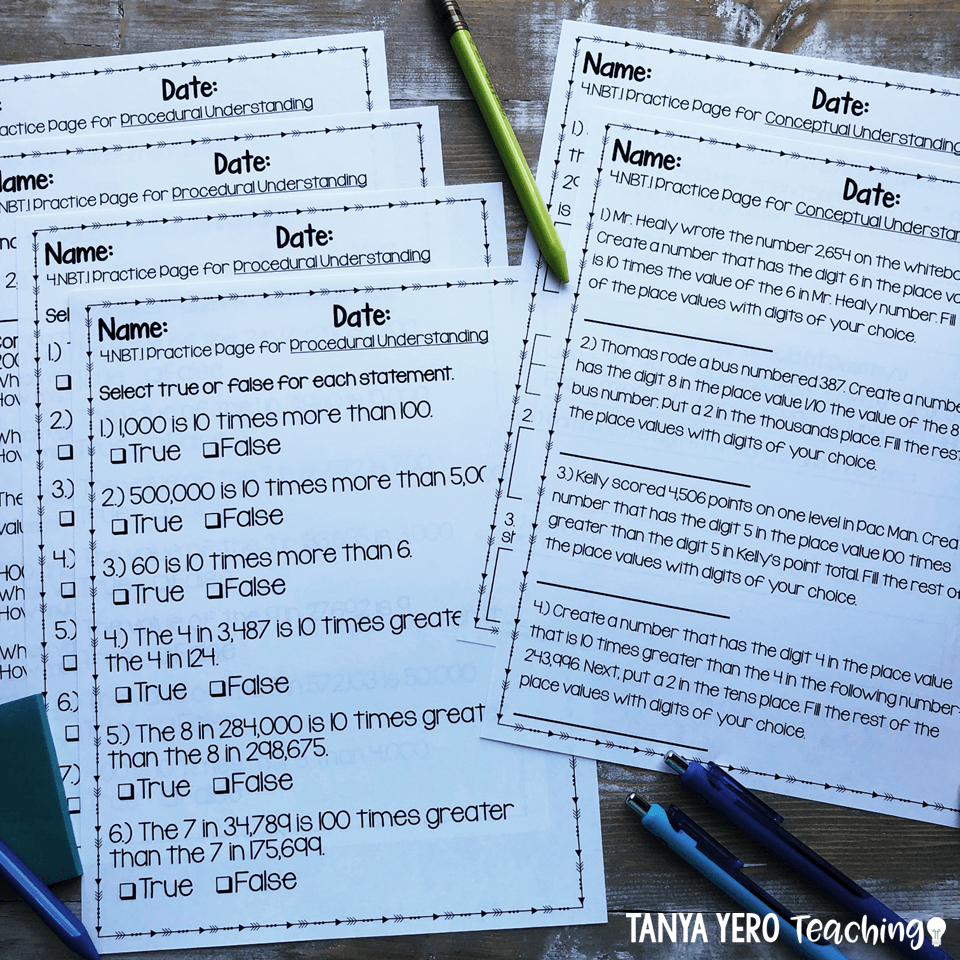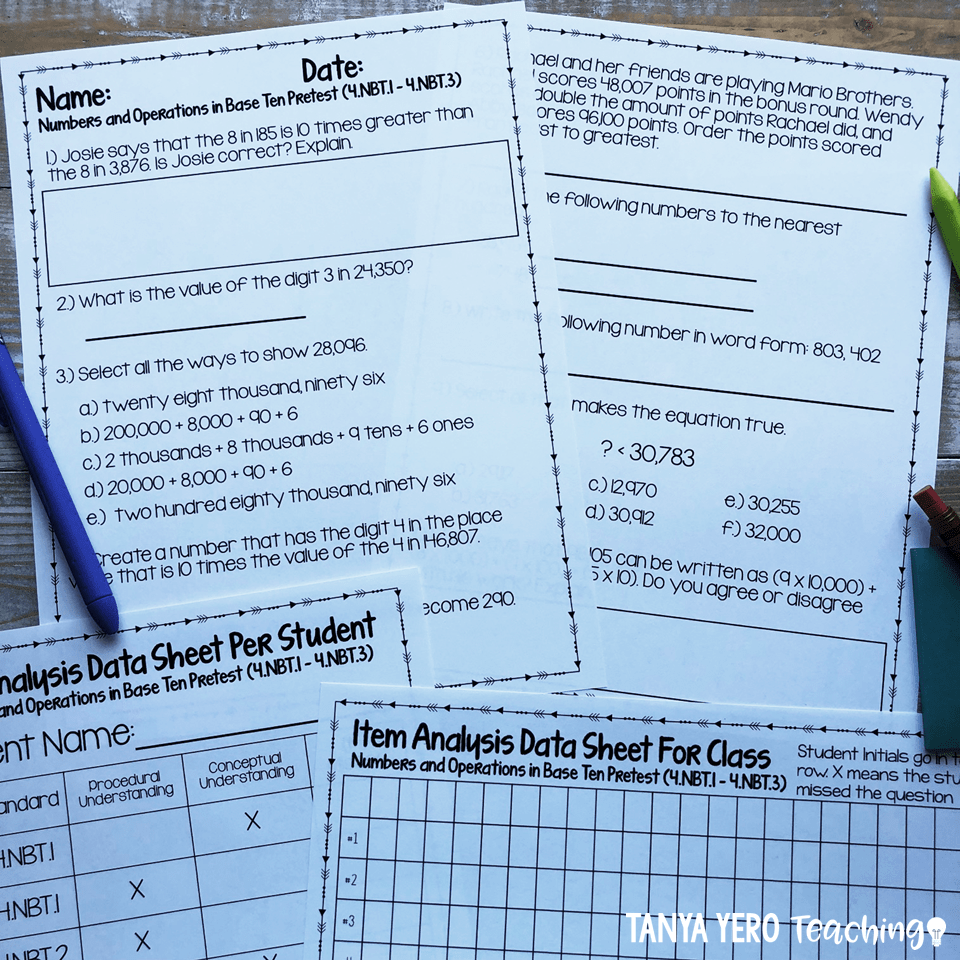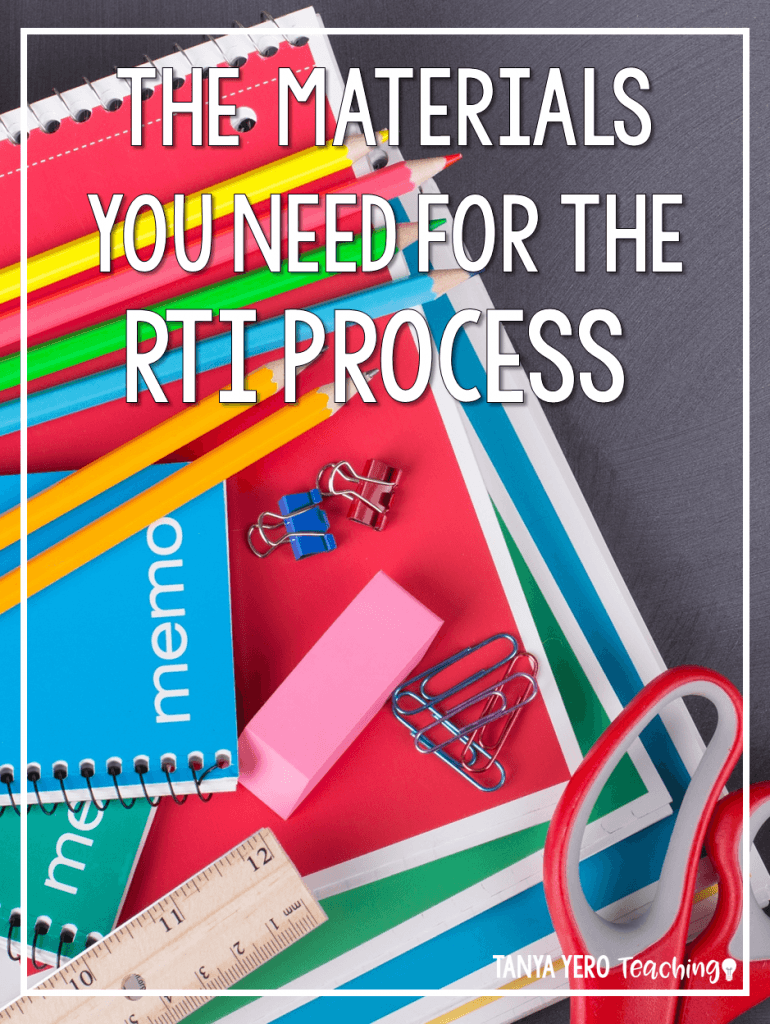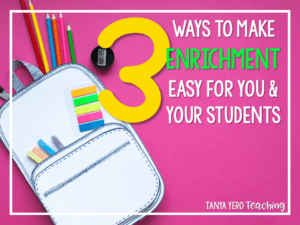
Welcome to Part 2 of my RTI series. In Part 1 I told you all about RTI: what it is, how it works and why we use it. Now, let’s get down to business. Here’s some hands-on talk about the materials you need to implement RTI in your math classroom.
Maybe you’re one of those uber lucky teachers who works in a school that gives you a full suite of practice materials and assessments for every skill level. If you exist, enjoy your good fortune and know that we’re all insanely jealous of you.
For the rest of us, we often have to come up with math RTI materials on our own. You can read all about my journey to create the materials I needed for my students.
Based on solid research and what I’ve learned the hard way, here are the three main types of materials that you need for math RTI.
Beginning of the Year and End of the Year RTI Math Assessments
This is where it all begins. The starting point of any RTI is an initial screening. This screening gives you a benchmark of the students’ skills as a class. It uncovers students with weak points and gaps in their knowledge. Every child should receive this test. You’d be surprised how even the strongest student may have a gap somewhere that could haunt him later in his math career. Once you have that data, you can begin appropriate interventions.
The partner of the initial screening is the end of year screening. Again, every student should take this assessment. You’ll have a clear picture of your students’ progress over the past year. The information you glean will help your students’ teachers the following year. It will also help you discover the strong and weak points of your own interventions.
How do you choose your pre/post year assessments? You need a test that:
- Is on grade level
- Aligns with state standards
- Clearly defines the skill that each question targets
Without those qualities, the test results are meaningless.
Personally, to have an assessment that met my criteria, I had to create it myself. But I don’t want you to have to reinvent the wheel. Sign up here to get my FREE pre and post-year assessments for grades 3 to 5.
Subscribe to our newsletter to get your FREE ASSESSMENTS! Success! Now check your email to confirm your subscription.
DON'T MISS OUT!
3rd Grade Teachers Click Below!
Subscribe to our newsletter to get your FREE ASSESSMENTS! Success! Now check your email to confirm your subscription.
DON'T MISS OUT!
4th Grade Teachers Click Below!
Subscribe to our newsletter to get your FREE ASSESSMENTS! Success! Now check your email to confirm your subscription.
DON'T MISS OUT!
5th Grade Teachers Click Below!
Math RTI Practice Pages
You completed your beginning of the year assessment. You identified which children need help. You know which skills they lack. Now what? Now come the interventions, of course. You’ll be giving individual students or small groups extra instruction and practice.
For the intervention to work, the practice needs to be:
- Laser focused on a specific skill
- Repeated and reinforced many times
- Possible for the student to complete independently.
This means that for every student and for every skill, a teacher needs multiple practice pages and worksheets.

Once again, to have what I needed for my students I had to create it myself. You can check out a FREE SAMPLER of my math intervention packs in my TpT store
Math RTI Mini-Assessments and Quick Checks
This is the third and most crucial category of RTI materials.
Throughout the year, you need monitor your students’ progress and the efficacy of your interventions. The gold standard in progress monitoring is CBM or curriculum-based measurement. This means monitoring and directly assessing specific academic skills and tracking that progress.
How do you do that? You need mini pre and post-intervention assessments that isolate and highlight specific skills. These quick checks take little time, do them a few times a week.

It’s the only way to know that your interventions are working. It’s the only way to know if your student is ready to move on to the next step. It’s the only way to gather the data you need to communicate with parents and administration. (More on that in Part 3!)
Guess what? To find appropriate checks for my students I had to make them myself. They are all included in my comprehensive Math Intervention Packs.
My assessments do more than highlight specific skills. They also indicate whether you are testing procedural understanding or conceptual understanding. Click here to learn more. Knowing the difference is crucial to providing the targeted assistance your students need.
We’ve taken an in-depth look at RTI materials, but there’s still one piece missing from the picture: data tracking. Stay tuned for Part 3 of this series. We’ll cover the hows and whys of data tracking. You’ll learn proven tips and best practices. You’ll see how to use your data to get top results for your students and collaborate with your administration and parents.
You’ll be prepared for whatever the school year brings.









